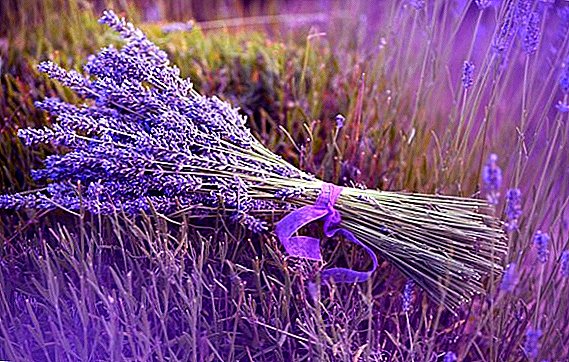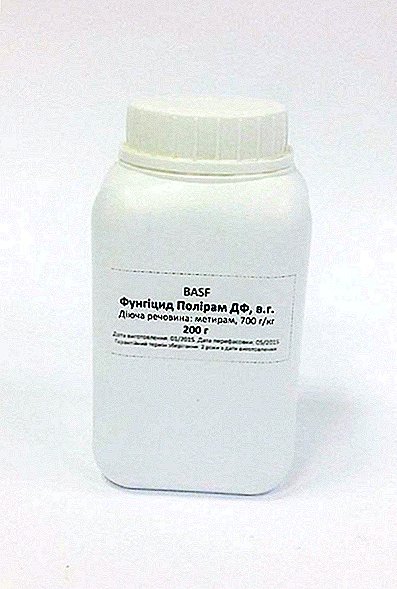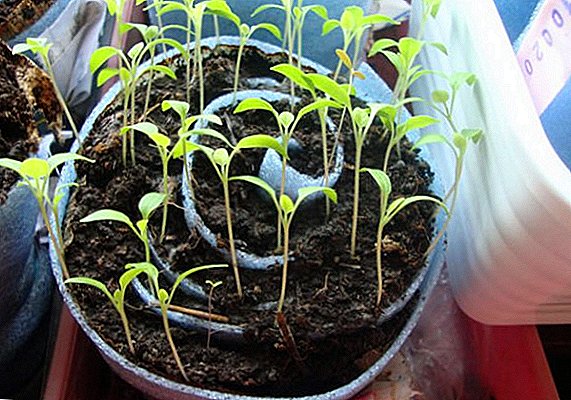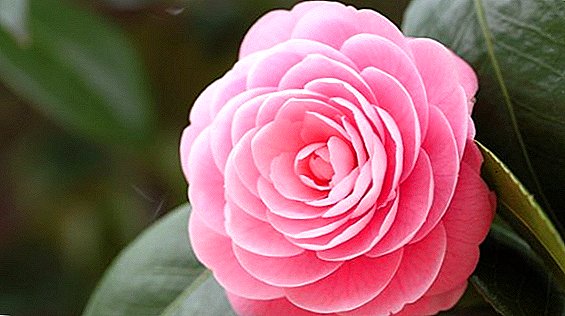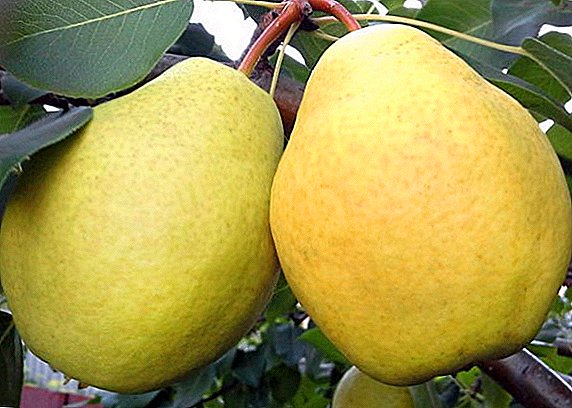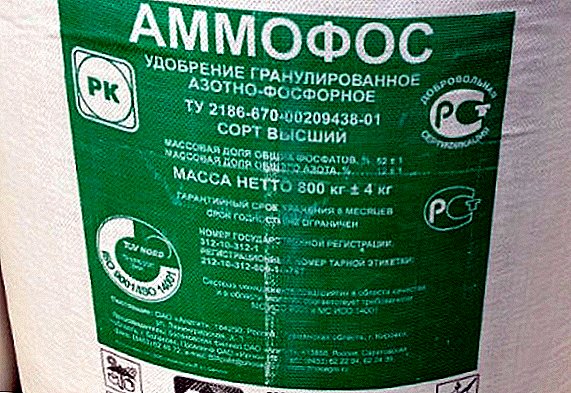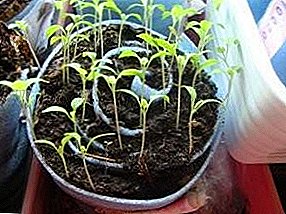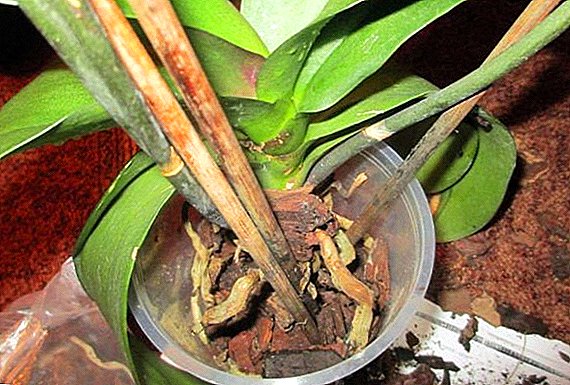 Orchids are quite delicate and exotic plants, so it’s not easy to reproduce the necessary conditions for them in a simple apartment. Quite often, this leads to a variety of flower diseases, which in a few weeks leads to his death. From this article you will learn in detail why orchids have roots dry, and what to do in such a case and how to save the plant.
Orchids are quite delicate and exotic plants, so it’s not easy to reproduce the necessary conditions for them in a simple apartment. Quite often, this leads to a variety of flower diseases, which in a few weeks leads to his death. From this article you will learn in detail why orchids have roots dry, and what to do in such a case and how to save the plant.
The main reasons why orchids dry roots
Orchid roots fade for many reasons; even a slight neglect of the plant’s requirements depresses its immunity and increases susceptibility to various environmental challenges. In this case, the roots in this process play a decisive role, since they directly interact with soil conditions and air. 
Hard water
Most residents of modern megacities use purified tap water from the central water supply system for various needs. Often such a liquid is saturated with a huge amount of various minerals and salts. While for humans and animals, such a combination often does not pose serious problems, many plants do not tolerate such water.
Did you know? Orchids are considered one of the most ancient plants on Earth, they appeared in the Mesozoic era, about 145 million years ago.
Hard water provokes the accumulation of these substances in the soil, which leads to its salinization. An overly salty soil becomes an aggressive enough environment to negatively affect flower tissue, causing a variety of disturbances. Over time, this leads to the withering of the entire underground part of the flower and its death. It is not difficult to notice the clogging of the pot, the roots and the soil are covered with a light white bloom, causing cracking of dense layers of soil.
Fertilizer burn
Burns of both green mass and roots are not uncommon in floriculture. In pursuit of abundant and prolonged flowering, many plant lovers resort to an intensive pot plant fertilizer system. However, this often has a detrimental effect on the vital activity of plants. Not only high concentrations of nutrients, but also regular supplements can damage both individual parts and all roots.  In this case, the substrate is saturated with a huge number of various chemical compounds and derivatives of their decay. They adversely affect the delicate tissues of the plant body, causing brown patches on the tissues of the roots. In addition, it often causes a soil to become torn off, which deteriorates its hydrological indicators. And this only spoils the general microclimate in the substrate.
In this case, the substrate is saturated with a huge number of various chemical compounds and derivatives of their decay. They adversely affect the delicate tissues of the plant body, causing brown patches on the tissues of the roots. In addition, it often causes a soil to become torn off, which deteriorates its hydrological indicators. And this only spoils the general microclimate in the substrate.
Water deficit
Irregular watering is one of the most common causes of wilting, both underground and above-ground root mass. Often, growers moisten the orchid 1-2 times a week, considering it to be the average optimum. However, each individual variety and hybrid of a flower is distinguished by its individual moisture capacity, which cannot but affect its need for moisture.
Important! The moisture content of the substrate when growing orchids should not fluctuate. It is watered immediately after the appearance on the surface of a light dry peel.
Neglect of this often causes both drying of the substrate and overmoistening, due to which its roots often fade. In this case, the problem can be recognized by the state of the root system. When there is an excess of moisture, they become covered with putrefactive coating, but in case of a lack they dry up without any other manifestations. 
Low air humidity
The optimal indicator of humidity in the orchid's habitat is within 50-60%, the neglect of this indicator is often and causes both the general wilting of the flower, and its individual parts. Since this species is considered moisture-loving, even a brief drought instantly affects the plant, causing a variety of pathologies.
Read also about what to do if sticky drops appeared on the orchid.
Most often with this problem flower growers are found in winter. Most heating devices instantly reduce the humidity in the room to 20-30%, which can not but affect the orchid. In this case, wilting is often not accompanied by any other manifestations and is quite easily eliminated when the humidity rises to the optimum level.
Infectious diseases
Often the infection becomes the result of improper care of the bush, including failure to comply with the optimal irrigation regime. At this time, the plant's immunity is sharply reduced, which creates favorable conditions for the defeat of a flower by pathogenic microorganisms. Most often, the infection is provoked by fungi, which is accompanied by a variety of external signs (putrefactive spots, white, brown or black plaque). 
Mechanical injury
Trauma to the roots rarely leads to their withering, but this problem is quite common not only among beginners, but also experienced flower growers. It often occurs after an unskilled or careless transplant. Many are in a hurry to seal the substrate when replacing the pot, which is highly undesirable, or careless about the plant. Often there is an injury after the pot falls from the window sill; in this case, appropriate measures should be taken immediately, otherwise the flower will die in just 1-2 days.
How to identify a problem
To determine the withering of the root mass of an orchid is quite simple. Most often, the first sign of this pathology is a general inhibition of flower growth. Various problems with flowers also join him, they wither, the formation of new buds gradually stops. The green mass also fades away, the leaves become more flabby. However, it is often not immediately possible to identify these signs, as they are very blurred and do not have a bright manifestation.
Learn how to prevent and treat orchids for diseases.
A clear sign of the drying of the root mass can be an active increase in air roots. Normally, an orchid develops no more than 3 aerial roots, so a sharp increase in their number must alert the grower. This always suggests that underground roots develop in adverse conditions, so in order to compensate for the deficiency of moisture and other substances, the flower just needs to form an effective above-ground root mass.  Also, non-characteristic root growth in the upper parts of the substrate may indicate a withering of the root system. If they germinate in different directions, including above the ground surface, this is the main sign of a problematic soil. So they try to find a source of freely available water or air. Over time, they can become discolored and wrinkle slightly, which indicates the irretrievable death of the roots.
Also, non-characteristic root growth in the upper parts of the substrate may indicate a withering of the root system. If they germinate in different directions, including above the ground surface, this is the main sign of a problematic soil. So they try to find a source of freely available water or air. Over time, they can become discolored and wrinkle slightly, which indicates the irretrievable death of the roots.
Ways to reanimate the orchid
The first thing that should be done if you have identified the withering of a plant is to determine the main cause of the pathological process. Only in this case, it is possible to choose the most acceptable scheme for the elimination of pathology with minimal harm to the body of the flower.
We recommend you to find out why the leaves turn yellow in orchids.
With the help of a transplant in a normal substrate
Orchid transplantation into a new substrate is one of the most radical measures for reanimation of a flower. It is irreplaceable if the plant root system has undergone chemical burns, infections, or spontaneous putrefactive lesions. However, for this flower must be prepared.
Conduct resuscitation transplant so:
- Cut the peduncle, and then the yellowed orchid leaves.
- Remove the plant from the pot, place it in a deep container with warm water for several hours.
- Take a flower out of the water, carefully feel its roots. Viable parts of the root system will be elastic, so they are left soft and sluggish to remove.
- Treat the orchid with a complex fungicide, for this it is soaked for 6-8 hours in a solution of Fitosporin (7 drops per 200 ml).
- To activate the flower, it is dipped into warm water for 2-3 hours every day by the root system, and then kept in air at room temperature.
- After the slices are lengthened by 4-5 cm, the orchid is transplanted into a new substrate.

If several roots remain intact on the flower, transplantation is carried out as follows:
- Remove the orchid from the pot, and then cut the peduncle and damaged roots.
- Soak the plant in a solution of succinic acid (1 g / l) for 2 hours, and then dry at room temperature.
- Plant a flower in a fresh substrate, subject to optimal conditions of detention (partial shade, moderate watering, temperature about + 20 ... + 25 ° C), it will root safely for only 1-2 weeks.
Important! If during the water bath the roots do not cease to fade, the water procedure is carried out throughout the day, with a break of 2-3 hours.
With water softener
As a mandatory measure, water softening is started if during the irrigation and irrigation, besides the main symptom, a variety of salt stains or a white bloom appear on the plant and soil. However, often soft water helps to restore a healthy increase in the above-ground mass in the event of a spontaneous withering of unexplained nature. The simplest way to soften water is simple and widespread boiling.
This method makes it possible to precipitate the majority of carbonate compounds, which represent the bulk of the salts dissolved in water. Carry out boiling for 20-30 minutes. The less time consuming method is simple settling. To do this, water is poured into a high container and kept at room temperature for a day, about 2/3 of the upper layer is taken for irrigation.  They also soften water by acidification. In this case, it becomes almost identical to the moisture that falls in the rainforest. To this end, citric acid, succinic acid, or any other carboxylic acid is gradually added to the water until a pH of 6.5 is reached.
They also soften water by acidification. In this case, it becomes almost identical to the moisture that falls in the rainforest. To this end, citric acid, succinic acid, or any other carboxylic acid is gradually added to the water until a pH of 6.5 is reached.
Fertilizing
Proper and timely application of top dressing is considered the best method of restoring faded roots exposed to mechanical damage. Top dressing with the help of solutions of phytohormonal substances that promote the activation of the natural processes of the synthesis of new cells is considered the most effective. The most affordable of these is a weakly acidic solution of succinic acid.
Did you know? Orchids can have a variety of shapes, in nature hybrids are found in sizes ranging from a few centimeters to several tens of meters.
It is prepared from 1 l of purified water and 1 g of succinic acid concentrate. This liquid is used for foliar dressings, it is poured in a small stream into the substrate until excess moisture is released from the drainage holes. Conduct the procedure instead of the next watering to full rooting orchids. For emergency recovery, the plant is soaked in solution for 2-2.5 hours. 
Prevention
To prevent the roots of the orchid from drying out, the following measures should be taken:
- when transplanting orchids need to pay special attention to the pot. An ideal pot should be several centimeters in diameter larger than the volume of the root system;
- during watering it is necessary to monitor the condition of the soil, it is not necessary to re-moisten the substrate, and also to subject it to drying. The soil should be watered moderately, no more than 1-2 times a week;
- carefully monitor the temperature and humidity in a flower growing environment (temperature is about + 18 ... + 25 ° С and humidity in the range of 50-60%);
- periodically process the flower complex fungicides;
- as the plant grows to replace the pot and substrate.
Find out if the orchid can be reanimated if the roots have rotted.
Drying the roots of an orchid is a fairly common pathology that occurs among experienced and beginning flower growers. This problem seriously affects not only the general condition of the flower, but often becomes the main cause of its death, so every gardener should ideally own the technique of plant resuscitation, as well as know how to properly restore damaged roots.



